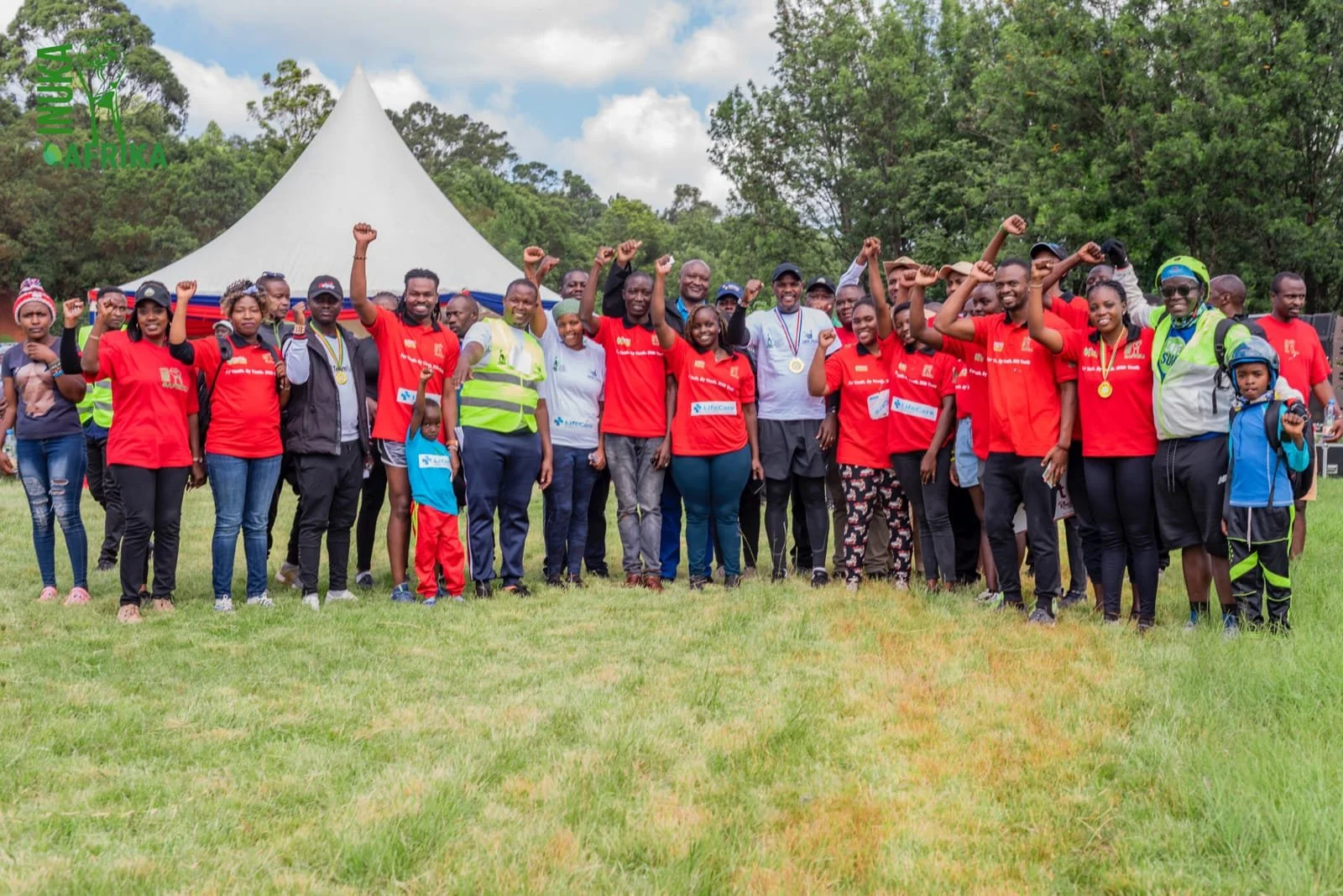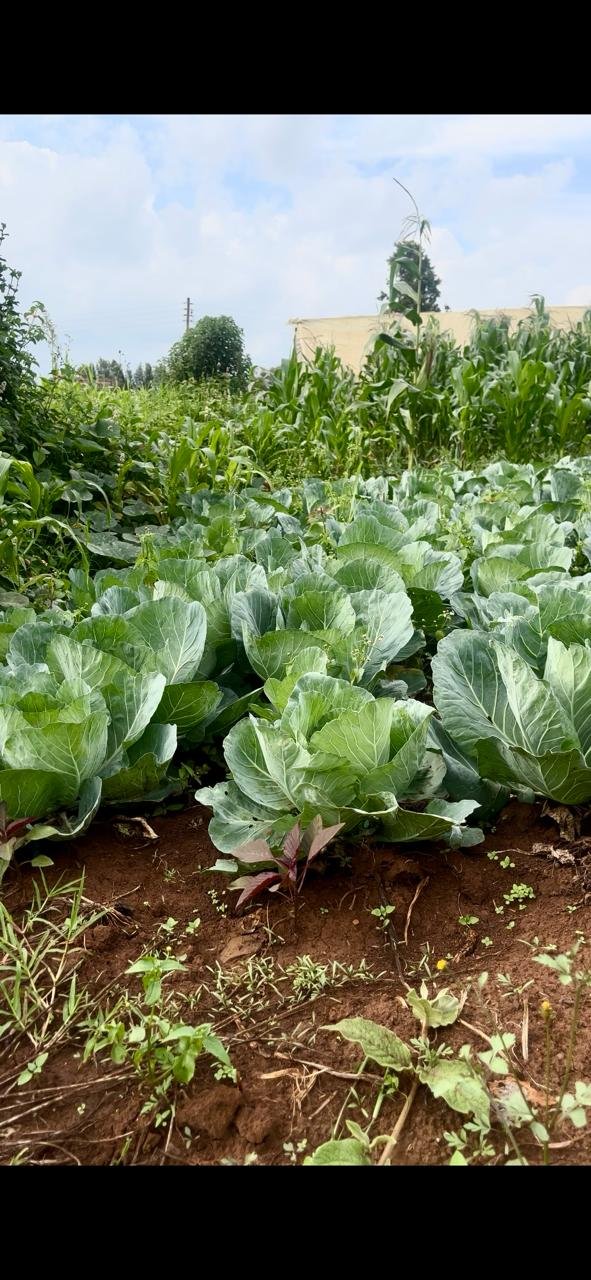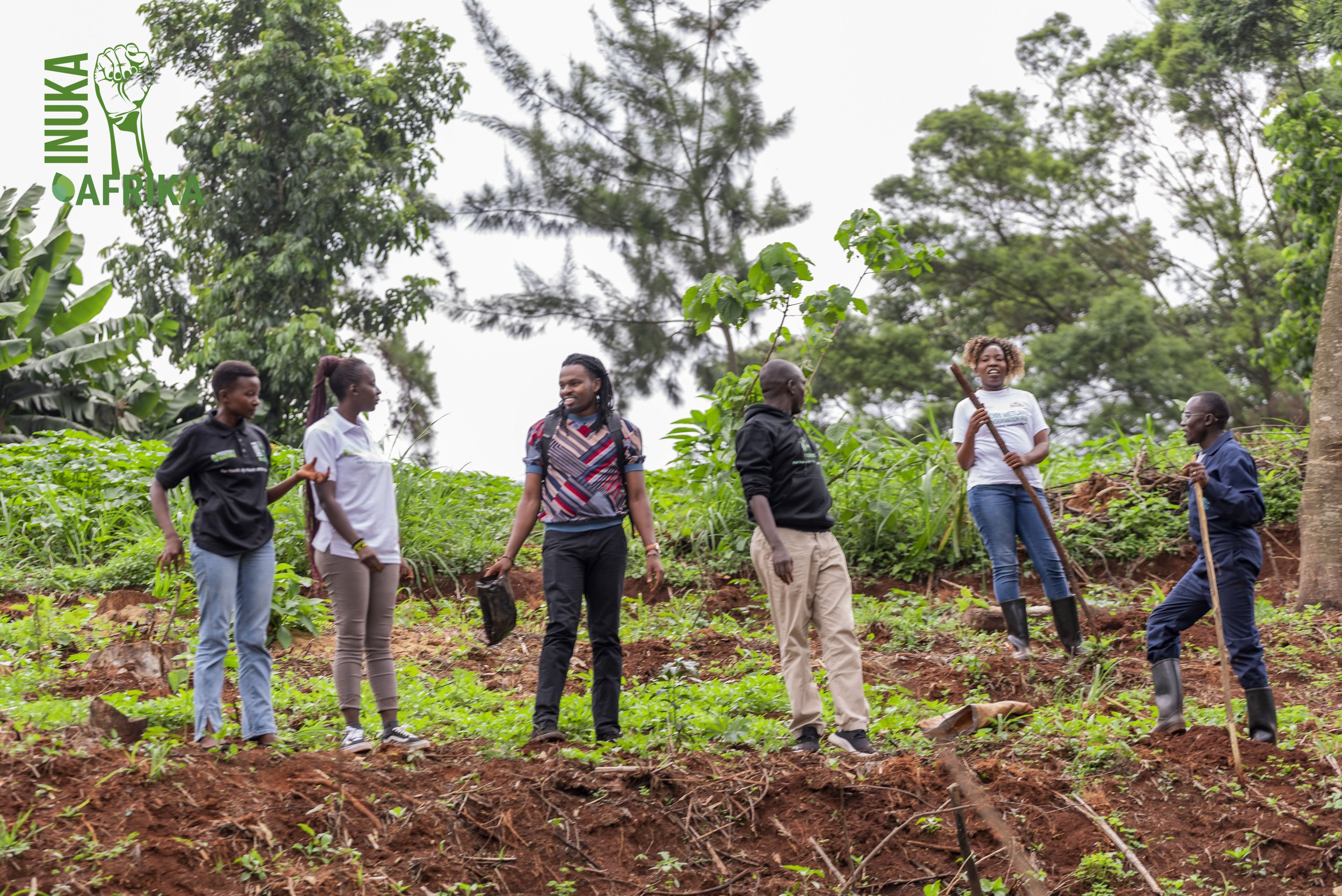“Through collective action, unwavering dedication, and a deep reverence for the land, the Friends of Ondiri Wetland Kenya exemplify the timeless adage: In the heart of Kikuyu, beats the soul of conservation.”
INUKA Team at Ondiri Marathon
In January of 2024, the INUKA team made its final study visit to this geographical marvel, hosted by the Friends of Ondiri Wetland Kenya (FOWK). Let us tell you a story about where this wetland has been and where it is going!!
THE HEART OF KIKUYU
Geographical Marvel
Nestled in the heart of Kikuyu Sub-County in Kiambu County - Kenya, Ondiri Wetland is a testament to nature, boasting the title of Afrika's second deepest quaking bog. Spanning an expansive area of 34.5 hectares and believed to hold depths of 2 - 3 meters, this wetland is a vital lifeline for the surrounding community, serving as a crucial water source and a sanctuary for diverse flora and fauna. It lies 2,000m above sea level and is enveloped by six communities: Kikuyu, Sigona, Muguga, Kinoo, Karai, and Kabete.
Unveiling History
Ondiri Swamp, formerly known as ‘Kihenia’ (meaning shiny surface) was initially an open lake that shined due to its ability to reflect sunlight. However, on the coming of the white settlers, they renamed it ‘Old Lake’, and the local people could only pronounce it as “Ondiri”, hence the name. Over time, it has experienced siltation from the construction of the Southern Bypass road and pollution from the riparian farmers' chemicals leading to peat development. This accommodates the reeds that cover the surface of the lake and go two feet deep. The formation of shallow peat and reeds on the water's surface gives the swamp its unique boggy state.
Myths and misconceptions can’t miss being a part of this spectacular natural feature and based on the fact that storytelling is rooted in African DNA and is intergenerational, this wetland is not an exception. It is believed that if a person accidentally goes under the peat, they will be found approximately 3 days later in Lake Naivasha because the swamp and lake are interconnected. To date, the interconnection of these features is yet to be verified, but the community still warns and urges people to be careful out of fear of losing a life.
THE GUARDIANS OF ONDIRI
Realizing the importance of this swamp and the danger it will be exposed to if the status quo is retained, Friends of Ondiri Wetland Kenya are champions of its rehabilitation. Key interventions are partnering with the government and the community, the business community, as well as learning institutions to advocate for its protection.
Friends of Ondiri Wetland Kenya efforts have realized Ondiri swamp being gazetted as a protected wetland and peatbog that is a source of Nairobi river and need for its protection. Reforestation and fencing of the wetland perimeter and the construction of an information centre and eco-toilet are among the success stories the team shares on its advocacy journey to protect the swamp.
The team aspires to achieve more and implement NbS initiatives that benefit people and nature. Setting up a botanical garden of indigenous species - such as Ficus sur (Mukuyu), Dovyalis macrocalyx, Nuxia congesta, Pouteria adolfi-friedericii and Tabernaemontana stapfiana (Mwerere), among other 98 indigenous species - to restore the swamps' authenticity is the vision that FOWK is currently undertaking for its protection.
NbS in Agriculture
Riparian farmers use the Ondiri swamp to source water for farming, improving their livelihood. There is a need to understand the impact of agricultural practices on biodiversity and our soils. Farmers need to be empowered to adopt best farming practices, such as using organic fertilizers and organic pesticides for regenerative agriculture to prosper instead of using synthetic farm inputs that interfere with the wetland ecosystem. Soil is a living component of the environment, and we have a strong attachment to it! The use of synthetic farm inputs exposes our soils to degrading minerals. Having healthy soil leads to healthy food, and healthy food leads to healthy communities!
The bridge between food security and food sovereignty was delved into during this INUKA study visit. We discussed how food security refers to the physical availability of food, its access, utilization, and sustainability for the people, while food sovereignty refers to the quality of food and nutrition. The people have a right to healthy and culturally appropriate food produced through ecologically sound and sustainable methods, and they have the right to define their own food and agriculture systems. Regenerative agriculture promotes food sovereignty and benefits people, nature, and our soils for healthy living. It is possible to exist and develop without depleting our natural resources. Regenerative agriculture is a conservation and rehabilitation approach to food and farming systems. While on this study visit, we were able to draw connections from theory to practice on regenerative agriculture and witness how riparian farmers along the wetland are embracing organic farming practices to improve the quality and quantity of their yields.
Ondiri Wetland Conservation Run
27th January 2024 marked the 3rd edition of the Ondiri Run to create awareness on World Wetlands Day, celebrated every 2nd February. INUKA team and Kikuyu community showed up to participate in either the 3km, 5km, or 10km runs. Kenyan Permanent Secretary of Climate Change, Mr. Festus Ng’eno, honored the event, urging more collaborative efforts to protect and conserve the highland bog.
Confronting Modern Challenges
Kikuyu is a fast-growing town in Kenya, and due to its proximity to the city, it is a central residential area for most people who work within the Nairobi CBD. Ondiri wetland is the water source for the over 60,000 residents of Kikuyu and its outskirts. It is the source of the Nyongara River, a tributary of the Athi River that has dried up due to overexploitation of the wetland.
The wetland is exposed to many challenges, including unregulated water consumption by institutions and riparian farmers, pollution from the chemical farm waste, siltation due to soil erosion by the construction of the Southern Bypass that has led to the drying up of the Nyongara River due to heavy layers of red soil sediments destroying the riverine ecosystem and preventing the river to flow smoothly. The increase in population within Kikuyu has led to the channelling of solid waste into the wetland. Another significant challenge facing the wetland is the invasion by the community to acquire farming land, which leads to more degradation of the bog. Deforestation around the wetland has led to the loss of nature and biodiversity, the extinction of authentic tree species, and the fauna (birds & wild animals) that initially inhabited the wetland are no longer present.
These challenges have depreciated the wetland ecosystem functions, causing the triple planetary crisis: climate change, nature and biodiversity loss, and pollution. Despite these challenges caused by anthropogenic activities, the wetland remains one of Kikuyu's most resilient and significant features.
Conclusion
NbS in agriculture shows the power of embracing best farming practices, but knowledge alone is insufficient. We need to empower our communities to cope with the stress and impacts of climate change. We need to strike a balance on the induced human activities we put on our planet. Earth has enough to provide for everyone but not to provide for one's greed. As our journey through Ondiri Wetland draws close, we are reminded of the profound interconnectedness between humanity and nature. Through collective action, unwavering dedication, and a deep reverence for the land, the Friends of Ondiri Wetland Kenya exemplify the timeless adage: "In the heart of Kikuyu, beats the soul of conservation."








